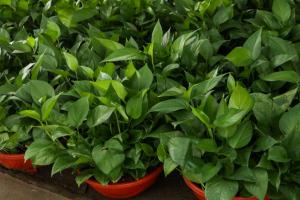Can You Use Topsoil for Potted Plants?
If you're new to gardening or just started growing plants indoors, you may be wondering about using topsoil for potted plants. The answer is yes, but there are a few things to consider before you begin.
The Benefits of Using Topsoil for Potted Plants
Topsoil is rich in organic matter and minerals, making it ideal for growing plants. It can help to retain moisture and nutrients in the soil, which is especially important for potted plants that can dry out quickly. Using topsoil can also improve a plant's root development, resulting in healthier and stronger plants.
The Drawbacks of Using Topsoil for Potted Plants
While topsoil can be beneficial for potted plants, it is important to note that it is not designed for container gardening. Topsoil can be heavy and dense, making it difficult for water to drain properly, which can lead to problems with root rot and other diseases. Using topsoil can also increase the weight of the pot, making it harder to move or hang.
How to Use Topsoil for Potted Plants
If you are still interested in using topsoil for your potted plants, there are certain steps you can take to ensure success. First, mix the topsoil with a lightweight potting mix to improve its drainage and aeration. Avoid using pure topsoil in your pots.
Next, consider using a pot with drainage holes to allow excess water to escape and prevent problems with root rot. If your pot doesn't have drainage holes, you can add a layer of gravel at the bottom to improve drainage.
Finally, monitor the moisture levels in your soil and adjust as needed. Topsoil can be slow to dry out, so take care not to overwater your plants. Ensure that the soil is dry to the touch before watering again.
Alternatives to Topsoil for Potted Plants
If you're looking for a more suitable option for growing potted plants, consider using a high-quality potting mix. These mixes are specifically designed for container gardening and are formulated to provide the right balance of nutrients and moisture retention. Some potting mixes can also be enriched with additional nutrients or pH adjusters to suit different types of plants.
You can also consider using a soilless mix, such as peat moss, vermiculite, or perlite. These mixes are lightweight and provide good drainage, making them ideal for potted plants. While they do not contain the nutrients found in topsoil, they can be easily amended with fertilizer or other additives to meet your plants' needs.
Conclusion
In summary, using topsoil for potted plants can be beneficial if done correctly. It can increase nutrient and moisture retention in the soil and promote healthy root growth. However, it is important to mix topsoil with a lightweight potting mix, use a pot with drainage holes, and monitor moisture levels carefully to prevent problems with root rot. Alternatively, you can use a potting mix or soilless mix specifically designed for container gardening to ensure optimal growth and health for your potted plants.

 how many times do yo...
how many times do yo... how many planted tre...
how many planted tre... how many pine trees ...
how many pine trees ... how many pecan trees...
how many pecan trees... how many plants comp...
how many plants comp... how many plants can ...
how many plants can ... how many plants and ...
how many plants and ... how many pepper plan...
how many pepper plan...































